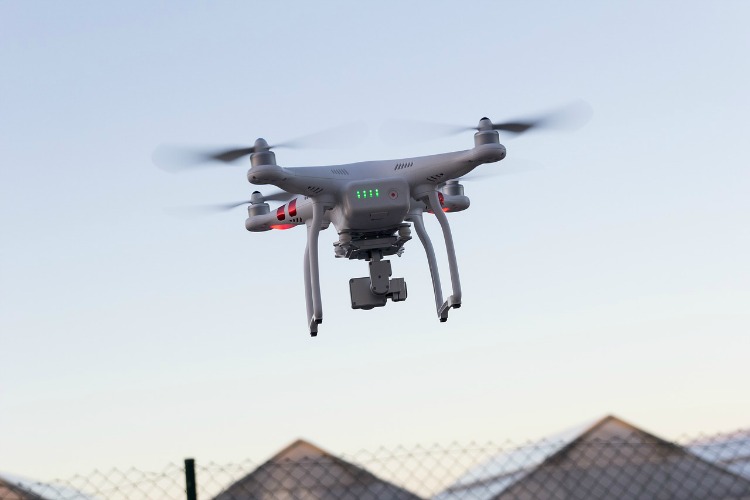The previous couple of months have been full of regulatory information.
We’ve had the proposal of the Feinstein invoice, the hobbyist courtroom determination, and information that the Trump administration is asking for the privatization of the Air Traffic Control system—and these are just a few of the massive gadgets (learn Christopher Korody’s current article 7 Forces Transforming the FAA and the UAV Industry for an excellent longer record).
Image supply
Well, the final week was no totally different.
In this text we’ll tackle current information on the FAA Reauthorization Act,which comprises proposals to quick observe lots of the regulatory adjustments we’re clamoring for in the business (like BVLOS flights and a growth of guidelines for air site visitors administration for sUAS), in addition to overlaying the FAA’s current assembly of the Advisory Rulemaking Committee (ARC) to debate a system for figuring out and monitoring drones.
FAA Reauthorization
Last week the Senate and House started the course of of making the FAA Reauthorization Act.
The objective of the laws is to reauthorize the FAA till the 12 months 2021, giving it funding and shaping its route.
In different occasions this may be a considerably commonplace course of, however given the present regulatory local weather it’s nearly inevitable that reauthorization will result in some massive adjustments for the FAA (if it will get handed—learn on to be taught extra about the complexities of constructing the act into regulation).
So far it appears to be like like ATC privatization could also be the largest change proposed. Neither the Feinstein drone act (really known as the Drone Federalism Act S.1272) nor the Drone Innovation Act H.R. 2930, which each suggest handing jurisdiction for airspace to native authorities, seem like they’re going to get any traction right here, since neither have been included into the respective House and Senate payments.
Some constructive developments seem like they may emerge from the House reauthorization invoice, which proposes that industrial drone operators get federal deadlines for rules governing deliveries, for BVLOS flights (which go hand-in-hand with deliveries), and for the creation of particular guidelines for smaller drones.
So what occurs subsequent?
Assuming each the House and the Senate move their respective payments, members from every will meet to settle the variations between the two and create a remaining proposal, known as a Conference Report. The Conference Report is then despatched again to each chambers for a vote, and, if it passes, is then despatched to the president, who both indicators it into regulation or vetoes it.
If you’d prefer to be taught extra, Christopher Korody does an incredible job breaking down the particulars of the course of in his current article on the topic.
In case you need to search for extra info, listed here are the particular names of every FAA Reauthorization invoice:
- The Senate invoice is S.1405, the FAA Reauthorization Act of 2017.
- The House invoice is H.R. 2997, 21st Century Aviation Innovation, Reform, and Reauthorization (AIRR) Act.
Image Source
FAA’s ARC Meets to Discuss Drone Identification and Tracking
The FAA’s Advisory and Rulemaking Committee (ARC) met just lately to debate the risk of implementing a drone monitoring and identification system.
“During this initial meeting, the ARC considered issues such as existing regulations applicable to drone identification and tracking, air traffic management for drones, concerns and authorities of local law enforcement, and potential legal considerations.”
– FAA
The ARC consists of representatives from Amazon, Ford, and the New York City Police Department, amongst others.
With the current hobbyist courtroom determination eradicating the FAA’s capacity to trace hobbyist drone house owners, there’s now a spot in terms of figuring out who’s flying what (admittedly, the registration system had its personal hole, in that pilots themselves had been registered however not their particular person drones).
The ARC’s inquiries are digging deeper than merely requiring pilots to register, and taking a look at how every particular person drone could be recognized and tracked.
This form of monitoring might really liberate different points of sUAS regulation, akin to flights over folks and flights Beyond the Visual Line of Sight (BVLOS). By figuring out who’s flying, there would doubtlessly be larger freedom in the forms of flights permitted.
Regarding expertise and how this type of monitoring might really happen, the Association for Unmanned Vehicle Systems International put out a name for proposals for the creation of a distant identification system for drones and acquired 45 distinctive responses. Industry large DJI submitted a proposal during which sUAS would transmit location and registration quantity utilizing radio gear already current on most drones.
On the authorized facet, the FAA Reauthorization Bill mentioned above is one potential avenue for offering the FAA with the authority they would want to implement such a monitoring system.
Right now these discussions are in the preliminary phases, and we’ll have to attend and see what emerges.
